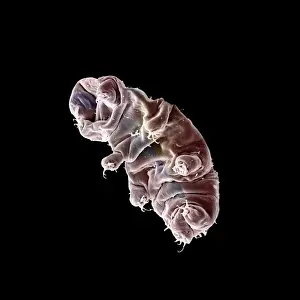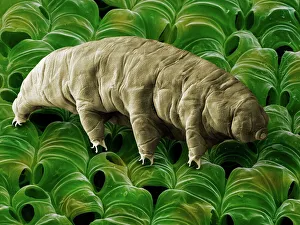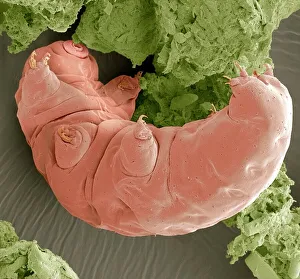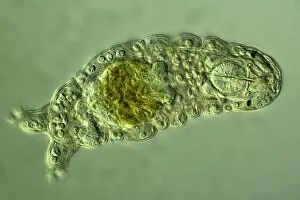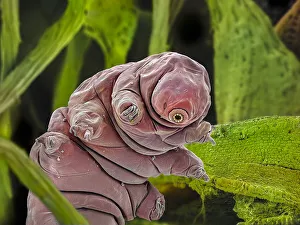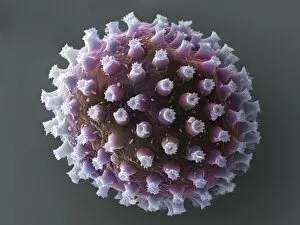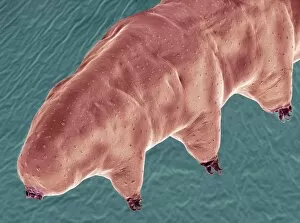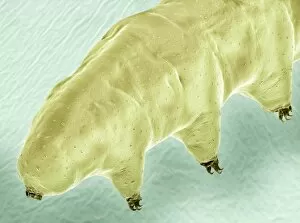Water Bear Collection
The water bear, also known as a tardigrade, is a fascinating microorganism that has captured the attention of scientists and nature enthusiasts alike
All Professionally Made to Order for Quick Shipping
The water bear, also known as a tardigrade, is a fascinating microorganism that has captured the attention of scientists and nature enthusiasts alike. This incredible creature can be seen in stunning detail through scanning electron micrographs (SEMs), revealing its intricate features and unique characteristics. At a magnification of x1250, an SEM showcases the water bear's minuscule body, measuring approximately 0. 1 millimeters long. Its compact form resembles that of a bear, hence its endearing nickname "water bear. " The false-colored SEM image taken in the Peak District National Park in Derbyshire, UK portrays this tardigrade nestled among moss, highlighting its ability to thrive in diverse environments. Another captivating SEM captures the beauty of a water bear egg with remarkable clarity. This microscopic marvel holds the potential for new life and exemplifies the resilience of these extraordinary creatures. While often mistaken for polar bears due to their name resemblance they can far from being related to Ursus maritimus. They belong to their own phylum called Tardigrada and possess astonishing survival skills. These tiny organisms can withstand extreme temperatures ranging from freezing cold to scorching heat while enduring high levels of radiation and even surviving in outer space. The significance of water bears extends beyond scientific curiosity; they have made appearances throughout history and art as well. From gracing journal covers like De Stijl to being depicted in illustrations showcasing their medium-sized groups or colonies - these resilient creatures have left an indelible mark on human culture. Whether observed under light micrographs or examined through advanced imaging techniques like SEMs, it becomes evident why water bears continue to captivate our imagination. Their ability to survive harsh conditions combined with their adorable appearance make them truly remarkable organisms worthy of admiration and study.

